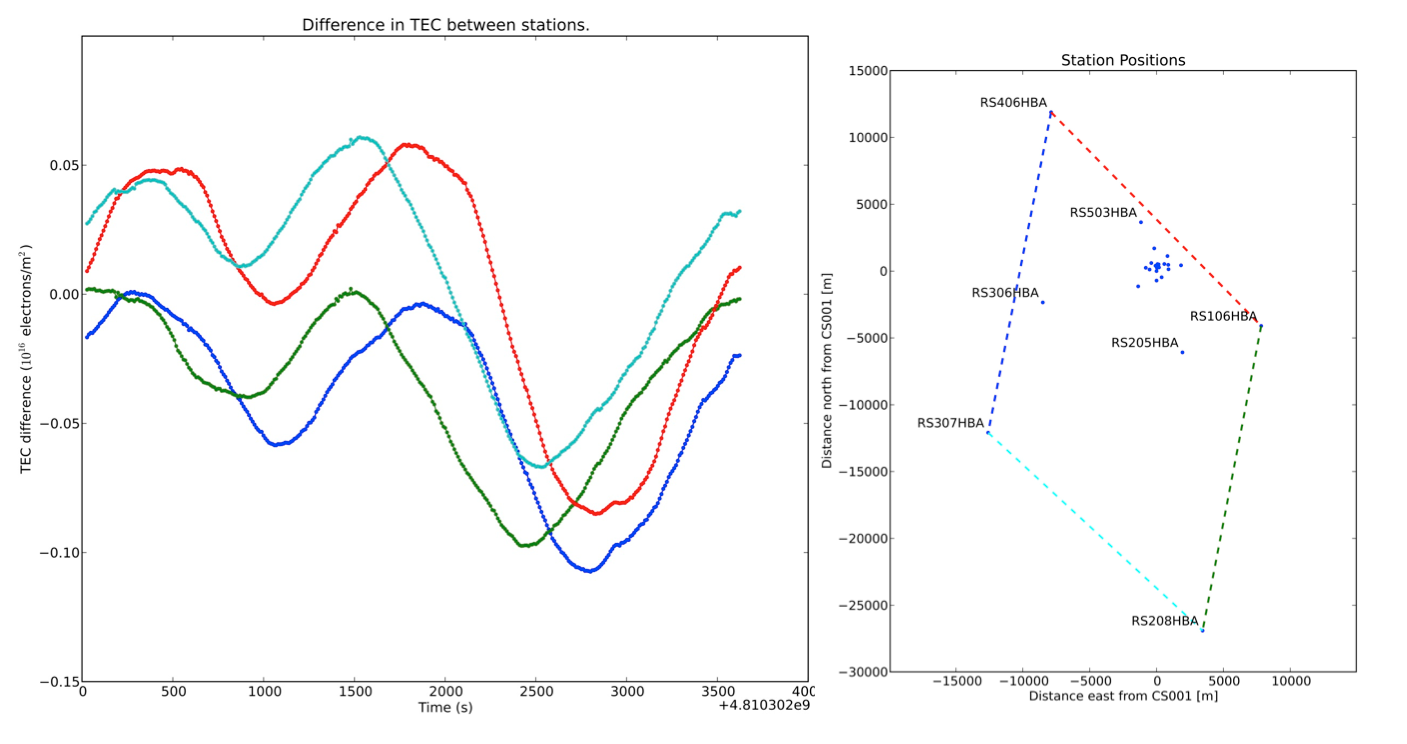
At 16:10 UTC (= 5:10 pm local time), LOFAR Chilbolton was used to record an 'all-sky' image. Even before calibration and analysis, this image shows the bright objects in the radio sky. On the left-hand side of the image there are, from top to bottom, Cassiopeia-A (a supernova remnant), Cygnus-A (a radio-galaxy) and the broader region which is the centre of our own Galaxy. However, to the right of the image, the Sun can be seen with extremely strong intensity, just before it set below the western horizon.
The image shown was made using the UK608 LBA. It demonstrates what a LOFAR station is capable of, even when working alone and independent of the main International LOFAR network. The image is not calibrated nor cleaned in anyway. The observations were made by Menno Norden (ASTRON), and the report by Derek McKay-Bukowski (STFC).
The web release is also available from STFC's "RAL Space" website: http://www.stfc.ac.uk/RALSpace/Areas+of+expertise/Astronomy/LOFAR-UK/In+the+news/37611.aspx














